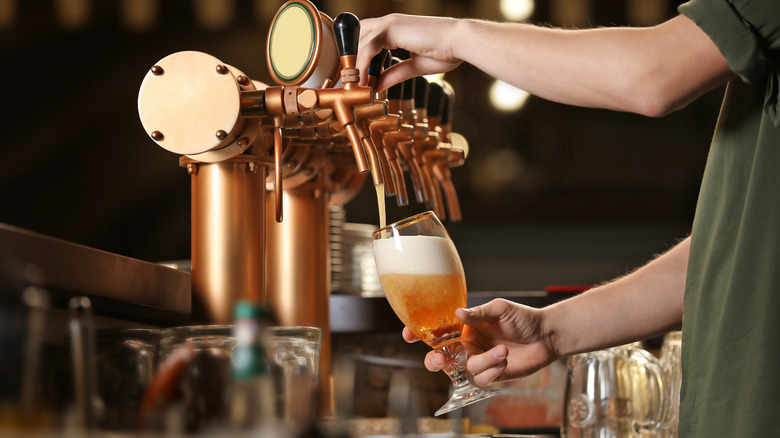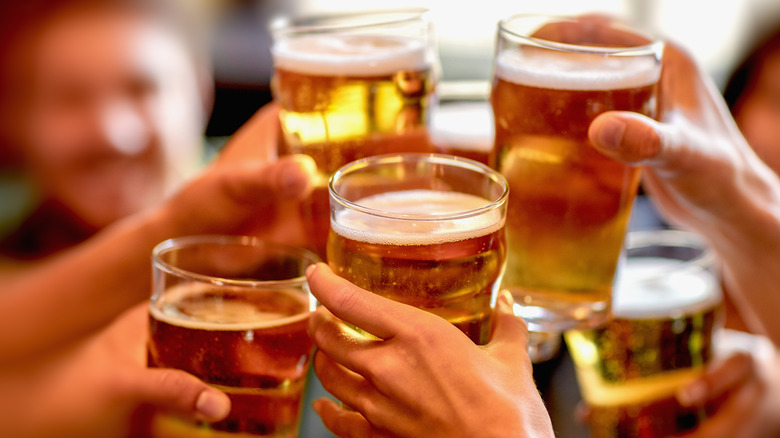The State Where You Can Now Serve Your Own Booze
Everyone's been there: It's a raging Saturday night or an exciting game day, and the bar is crowded with folks trying to order a cold pint. Waiters are whizzing past tables, the bar has a line that stretches on without end, and you're doing everything you can to find someone to take your drink order. By the time the night has come to an end, you've spent more time trying to order your drinks than actually enjoying them.
But where there's a problem, there's a solution. And thanks to technology, there's always a solution. Pour-your-own beer technology has been taking the beverage industry by storm over the last decade, and industry experts think that the trend is here to stay. Josh Goodman, the founder PourMyBeer, which manufactures self-serve tap technology, told NPR that the company sold just 200 taps in 2015, with sales rising to a whopping 5,000 over the next five years. Fellow brand iPourIt also saw sales double in 2017, then increase by a further 70% the following year.
As it turns out, being able to pour your own drinks at bars is a change that might indeed be a permanent one. News has it that the state of Michigan is the latest to join 45 other states allowing patrons to serve themselves their alcoholic beverages, per Eater.
How do these self-serve taps work?
First drawn up by Senator Jim Runestad in 2021, Senate Bill 656 was recently passed by Michigan Governor Gretchen Whitmer (via MLive). The bill now permits licensed bars and restaurants in Michigan to install self-serve tabletop and wall-mounted taps so that customers can pour their own drinks. The amendment to the Michigan Liquor Control Code was inspired by the restaurant labor shortage and fears of COVID-19 transmission over the pandemic, says Runestad. Self-serve taps work via pre-paid cards and can dispense beer, wine, and premixed cocktails, but if customers want any other drinks — neat spirits, craft cocktails, and the like — they'll still need to make a beeline for the bar.
Many people, such as Kate Bernot of The Takeout, see both "pros and cons" of the self-serve model. On one hand, customers may get to wait less and sample a wider variety of beverages by pouring themselves smaller amounts. On the other hand, they'll miss out on chatting with bartenders for expert recommendations.
Though the self-serve stations in Michigan mean less face time between staff and guests, they aren't an unlimited alcohol buffet: They will dispense no more than 96 ounces per order, and each type of drink has a maximum pour. If guests want to reload their cards, they'll have to get the staff's OK to do so. According to Runestad, this measure comes as a way to keep customers from drinking too much alcohol and is a "much more safe way" to serve booze.

